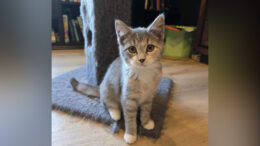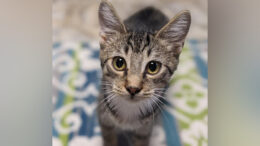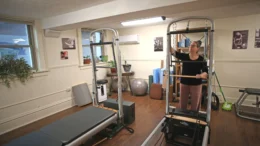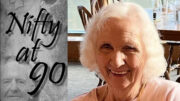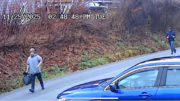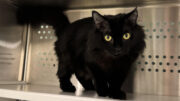NEW ORLEANS (AP) — National Weather Service teams were studying scenes of severe weather damage in Louisiana and Mississippi on Wednesday to determine where tornadoes struck and just how powerful they were.
At least four confirmed tornadoes hit Louisiana and one hit Mississippi on Tuesday, meteorologists said. There may have been more still in Louisiana, but it could take several days to find the evidence, Christopher Bannan said.
“Confirmation teams look for a concentrated, focused path” and check whether tree trunks and other large pieces of debris in that path cross each other, he said.
That differs from other wind damage, he said: Damage from a downburst radiates outward from a central point, and straight-line wind damage is widespread, without a set path, with downed trees and other debris pointing in the same direction.
One of the tornados lifted the trailer home of Brittany Ross’s family into the air and slammed it back down moments after she was savoring the smell of her aunt’s simmering white beans.
“The place started shaking, kind of twisting,” she said amid the wreckage at a small trailer park in eastern New Orleans, which got the worst of the weather that injured about 40 people in southeastern Louisiana.
Ross, 26, her aunt and two others crawled out of the wreckage as debris was still flying around them — uninjured, but suddenly homeless.
The Louisiana tornadoes destroyed homes and businesses on Tuesday, flipped cars and trucks and left thousands without power, but no deaths were reported, Gov. John Bel Edwards said.
The governor took an aerial tour and made a disaster declaration before meeting with officials in New Orleans. Worst hit was the same 9th Ward so heavily flooded in 2005’s Hurricane Katrina.
Edwards, a Democrat, said he was heartbroken to see these people suffering again. He promised the state will provide the people affected with the resources they need as quickly as possible.
He said seven parishes were hit by tornadoes in an afternoon of tumultuous weather across southeastern Louisiana. The storm also brought hail and heavy rain to Mississippi, where two counties reported wind damage from suspected tornadoes. Parts of the Florida Panhandle and southern Alabama also saw severe weather, but no injuries.
Artie Chaney said her granddaughter pulled up to the house from school as a hailstorm fell, just ahead of the tornado.
“Rocks were falling on the car, and I was looking out the side door and saw the clouds moving fast. I heard this sound. We looked up in the air and we could see debris in the distance and before we knew it, it was just barreling down on us,” Chaney recalled.
“We ran in the house; the lights went out. We ran down the hallway to the middle bedroom and then we just heard glass shattering. We thought we weren’t gonna make it. It seemed like it lasted a long time. It was a horrible experience. We were just so grateful to God that nobody was hurt.”
Chaney’s voice broke as she looked over the wreckage. “We went through all of Katrina, with no damage. I didn’t think I’d be starting over again.”
The Baton Rouge area also got hit. Three people were injured and several homes and buildings damaged in the historic part of Donaldsonville, about 20 miles southwest of the capital, said Ascension Parish Sheriff’s spokeswoman Allison Hudson.
And in Killian, just east of Baton Rouge, the mayor said several houses were destroyed and several others damaged, but an elderly couple suffered the only injuries he knew of: one, a broken leg; the other, a broken arm.
“How you manage to get blown completely across the street with cinderblocks flying and no worse than a couple broken limbs — apparently the good Lord was looking after them,” Mayor Craig McGehee said.
An official at NASA’s Michoud facility in New Orleans said it suffered some structural damage but the deep-space equipment being built there does not appear to have been harmed.
Steve Doering said the hardware and tooling used in the Orion and Space Launch System projects were not damaged, but Michoud will have to make a “significant effort” to cover everything up so that any more bad weather won’t affect the equipment while the roof and walls are repaired.


















